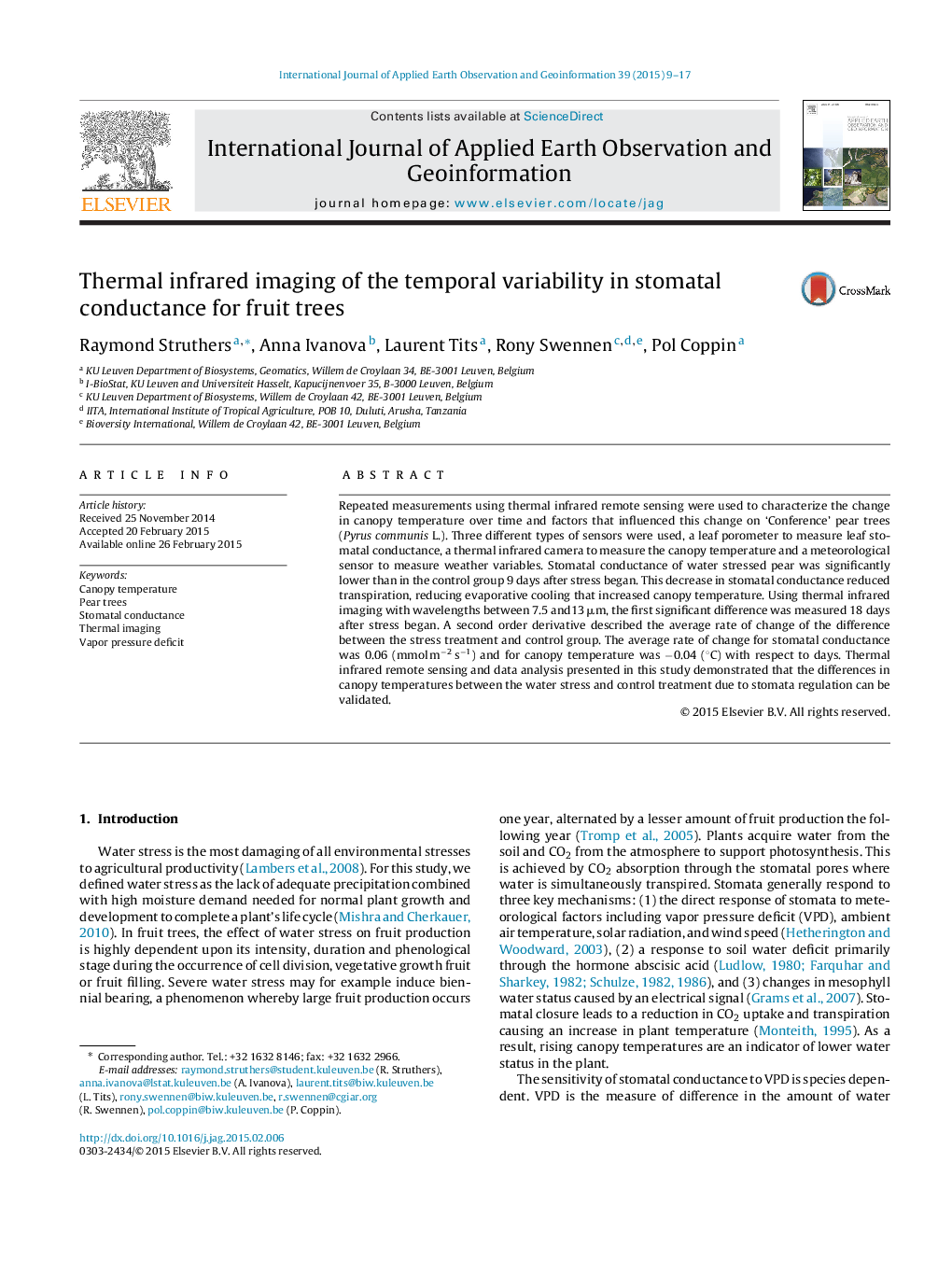| Article ID | Journal | Published Year | Pages | File Type |
|---|---|---|---|---|
| 6348606 | International Journal of Applied Earth Observation and Geoinformation | 2015 | 9 Pages |
Abstract
Repeated measurements using thermal infrared remote sensing were used to characterize the change in canopy temperature over time and factors that influenced this change on 'Conference' pear trees (Pyrus communis L.). Three different types of sensors were used, a leaf porometer to measure leaf stomatal conductance, a thermal infrared camera to measure the canopy temperature and a meteorological sensor to measure weather variables. Stomatal conductance of water stressed pear was significantly lower than in the control group 9 days after stress began. This decrease in stomatal conductance reduced transpiration, reducing evaporative cooling that increased canopy temperature. Using thermal infrared imaging with wavelengths between 7.5 and13 μm, the first significant difference was measured 18 days after stress began. A second order derivative described the average rate of change of the difference between the stress treatment and control group. The average rate of change for stomatal conductance was 0.06 (mmol mâ2 sâ1) and for canopy temperature was â0.04 (°C) with respect to days. Thermal infrared remote sensing and data analysis presented in this study demonstrated that the differences in canopy temperatures between the water stress and control treatment due to stomata regulation can be validated.
Related Topics
Physical Sciences and Engineering
Earth and Planetary Sciences
Computers in Earth Sciences
Authors
Raymond Struthers, Anna Ivanova, Laurent Tits, Rony Swennen, Pol Coppin,
